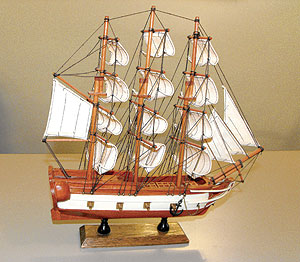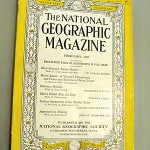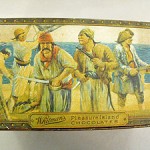 Eagle Feathers #19 – The Blessing
Eagle Feathers #19 – The Blessing
By Bob (Monty) Doherty
John Winthrop, the first Governor of Massachusetts, arrived in America from England in 1630. Upon his arrival, he was given 600 acres of land by the King that were located along the Mystic River in Charlestown (now Somerville).
Waterways were essentially the highways of the day and the fastest way to get around. Because of this, one of the Governor Winthrop’s first orders of the day was to commission the building of a sound ship. This ship would be named The Blessing of the Bay.
 The Blessing, as Winthrop referred to the vessel in his writings, was used to deliver men and soldiers westward, where they built a garrison to protect English settlers from the Dutch and Indians on the Connecticut River. These communities included what would become Chicopee, Springfield, Holyoke and other towns that are still in existence today. If the Governor had not taken these actions, the settlements on the Western Massachusetts border could easily have come under Dutch control. At that time, they held New York and were rapidly extending their reach. In fact, New Amsterdam was the original name of New York City, until the English acquired the island years later. The Blessing of the Bay proved tantamount to settlers’ safety.
The Blessing, as Winthrop referred to the vessel in his writings, was used to deliver men and soldiers westward, where they built a garrison to protect English settlers from the Dutch and Indians on the Connecticut River. These communities included what would become Chicopee, Springfield, Holyoke and other towns that are still in existence today. If the Governor had not taken these actions, the settlements on the Western Massachusetts border could easily have come under Dutch control. At that time, they held New York and were rapidly extending their reach. In fact, New Amsterdam was the original name of New York City, until the English acquired the island years later. The Blessing of the Bay proved tantamount to settlers’ safety.
The Blessing of the Bay was also pivotal to commerce. Trading and bartering of goods became the first industry of New England where fish and fur were the main items of trade. The Blessing enabled settlers to trade with far-off colonies and would sail as far south as Virginia to acquire goods, such as molasses used to make rum, sugar cane and various other products.
It was also the first ship that was armed to fight pirates and to protect other merchant ships.
There are varying tales illustrating the demise of The Blessing. Some speculate that it was lost in a shipwreck on the inner side of Cape Cod. Others say it sailed off course during a storm on the outer Cape, and still others believe that it mysteriously disappeared off the coast of Virginia.
 Interestingly, the February, 1936, issue of National Geographic Magazine features an article about the Bahamas Islands that states; “Enmity toward England, after the loss of the Great Armada, brought about sanguinary conflicts between Spanish and English ships all about these far-flung Atlantic islands, which in time became notorious for the nautical brigandage of the buccaneers. For generations these outlaws were the cause of constant diplomatic friction between London and Madrid, as when English sailors, seized from the Boston ship, The Blessing, was stripped by Spaniards, tied naked to mangrove bushes on a Bahamas Cay and left to die of thirst in plain sight of each other.”
Interestingly, the February, 1936, issue of National Geographic Magazine features an article about the Bahamas Islands that states; “Enmity toward England, after the loss of the Great Armada, brought about sanguinary conflicts between Spanish and English ships all about these far-flung Atlantic islands, which in time became notorious for the nautical brigandage of the buccaneers. For generations these outlaws were the cause of constant diplomatic friction between London and Madrid, as when English sailors, seized from the Boston ship, The Blessing, was stripped by Spaniards, tied naked to mangrove bushes on a Bahamas Cay and left to die of thirst in plain sight of each other.”
For decades, there was a memorial tablet by the Old Wharf, where The Blessing was built and launched. The Old Wharf was located near what is now The Christmas Tree Shop at The Assembly Square Mall on McGrath Highway near Wellington Bridge. The tablet was built on state property, and unfortunately is no longer there and has never been replaced. It used to read: “Ancient Wharf. Here, Governor Winthrop launched The Blessing of the Bay, the first ship built in Massachusetts, July 4, 1631.” There are many reminders of the ship and the vicinity including The Blessing of the Bay Boat House on Shore Drive, the Blessing of the Bay painting on the liquor store at the corner of Temple Street and Broadway, as well as being featured in the children’s wall mural on Mystic Avenue.
In the early 1900s, Somerville firefighters disassembled the remains of the Ancient Wharf that was found at low tide. Chief Hopkins and his men donated the retrieved remains to the Somerville Historical Society. The society used these remains to construct chairs, gavels and other collectible memorabilia.












Reader Comments